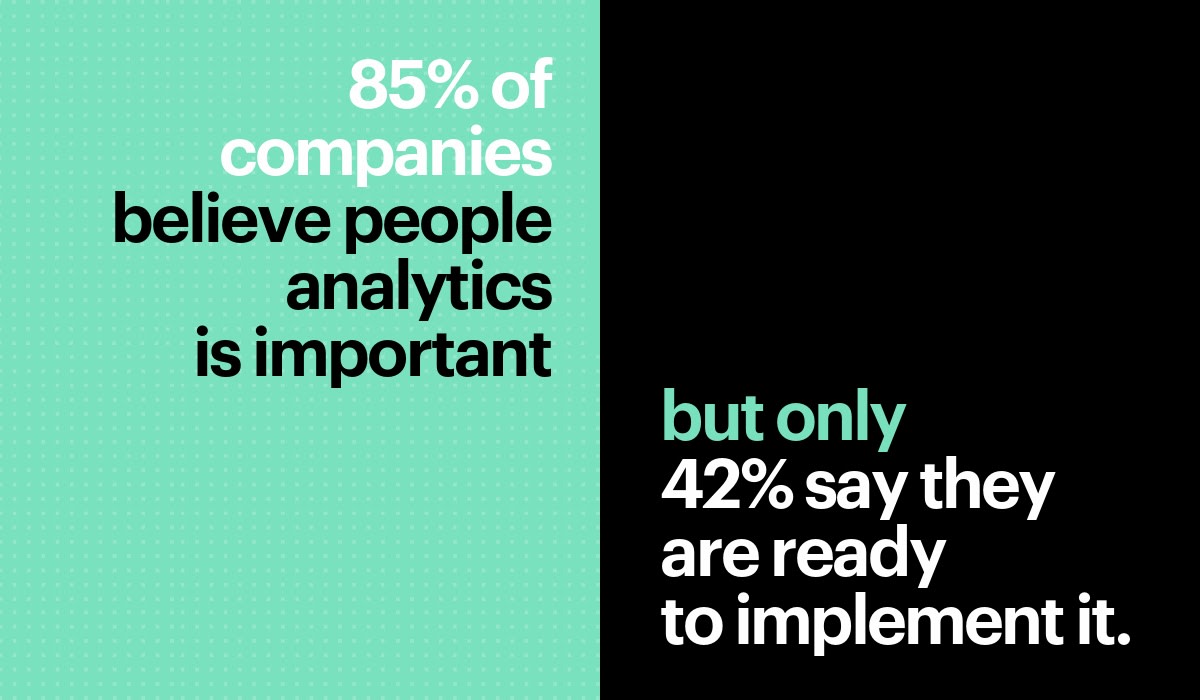People Analytics 101: How to Meet Business Goals with People Data
People analytics is the practice of collecting and transforming HR data to improve the way you do best. Here’s how to do it in four steps.

In this Outsmart session, Caitlin Bigsby, Product Marketing Director at Visier, and People Analytics Consultant, Marie Mineur discuss how organizations can use people analytics to uncover valuable business insights and solve problems. Register now for Outsmart 2023!
The ever-evolving business environment creates a need for better people decisions. We have more workforce data than ever, but having data alone isn’t enough to succeed. You must be able to use your data to determine the root cause of issues, apply interventions, and anticipate what’s coming in the future based on evidence
However, according to a recent Deloitte Human Capital Trends report, 85% of companies believe people analytics is important, but only 42% said they are ready to address it. What can you do in your organization to increase the understanding of and get started with people analytics?

This was a central theme in the Outsmart session, People Analytics 101: Driving Business Value through Human Resources. During this session, Visier’s Caitlin Bigsby engaged in a discussion with People Analytics Consultant Marie Mineur about what businesses can learn about their workforce when they implement people analytics. Here’s a recap of that conversation.
What is people analytics?
People analytics (also known as HR analytics or workforce analytics) is the practice of collecting and transforming HR data and organizational data into actionable insights that improve the way you do business.
Caitlin Bigsby, Director of Product Marketing at Visier, explained how people analytics is similar to following a recipe. “The ingredients are all your pieces of data. They get mixed together, processed, and transformed through the analytics solution. The outcome is the sum of these parts, and it’s a bigger story. It’s the collective imagery of thousands of data points that come together to provide you with some information to work with.”
This is fundamentally different technology from the technology that supports your HCM solution. You need to bring together different sources of data and align them.
Data cleanliness and people analytics
There’s an idea that you must clean your data to implement people analytics, but that’s not true. If you wait until you have clean data to start, you may never start at all. As Caitlin pointed out, people analytics actually leads you to have cleaner, more standardized data.
“The process of onboarding gives you the opportunity to look at your data at a holistic level,” she said. “[It helps you] spot the misses and the mistakes, and the areas where maybe you can do some clean up on the backend.”
4 steps to using data to meet your business goals
Once you set the foundation for people analytics at your organization, the next question is: How can you use it to drive business value? People Analytics Consultant, Marie Mineur walked through how First West Credit Union accomplished this in four steps:
Step 1: Understand where you are
Before you can make any progress on business initiatives, you have to understand the current state of your organization as it relates to the outcome you want to achieve. During the session, a D&I goal was presented as an example.
“If your goal is to reach 50% diversity then I would suggest starting by calculating the female ratio. Divide the count of female employees by the headcount. Then the headcount is the total number of employees that you have or the total number of active employee IDs,” Marie said.
Step 2: Visualizing the trend
Once you know the ratio, you need to figure out how the numbers are trending. In this case, you would identify the areas where you have the lowest female ratio and work to understand what’s driving the numbers down.
Marie found that there were two departments that were under 40% diversity, very far from the company goal of 50%. One way to start finding a solution to this problem is to start with the department with the lowest diversity rate. In this case, that was sales.
Step 3: Drilling down into problem areas
Next, Marie used Visier to see the female ratio by location and department. Then she compared the female headcount to the male headcount over time. She suggests that when facing an issue like this, there are a couple of possible causes. Either enough women aren’t being hired, or they are leaving the company and being replaced by men. She found that both of these things were contributing to the problem.
Step 4: Finding a solution
At this stage, you’ve found the root of the problem and can do a bit more digging. For this issue, that means figuring out if enough women are applying and why they are leaving. Looking at the recruitment process, this raises several questions. Are you reaching enough female applicants? Is there bias in the recruitment process?
When it comes to people exiting the company, Marie found that women were leaving for reasons related to compensation, personal challenges, and lack of career growth. “Now compensation, you might wonder, is there a big equity issue here? When you’re talking about personal challenges, can you come up with different work arrangements? Then the lack of career growth, you might question if you have equal opportunities,” she said.
This is the depth of insight you can uncover with basic data and a people analytics solution.
Harnessing the power of people analytics
Many companies have seen the impact that people analytics can have on business challenges. Don’t wait to get started on your people analytics journey. Use the data you have now to explore opportunities for meaningful change and to make progress towards better business outcomes.
Get Outsmart content straight to your inbox
Subscribe to the People Insights Monthly newsletter for actionable insights and stories.
Subscribe now